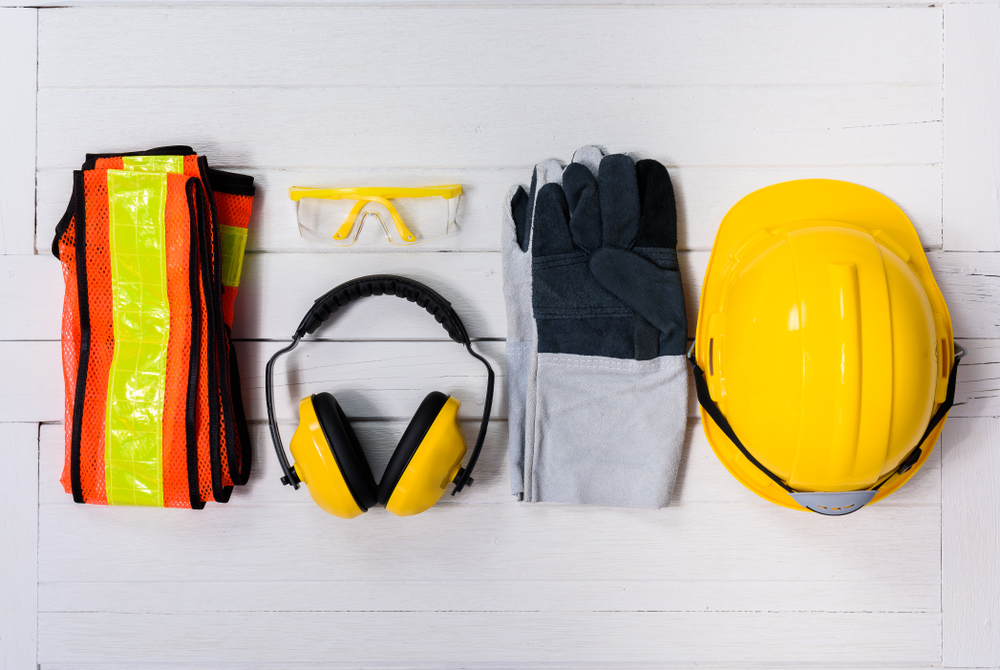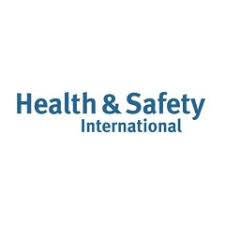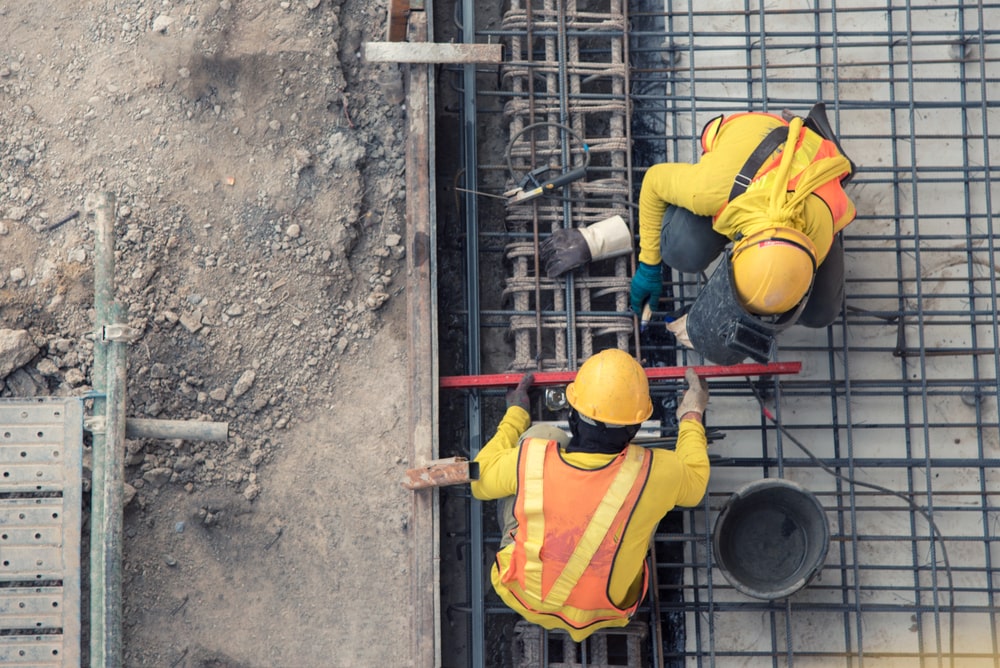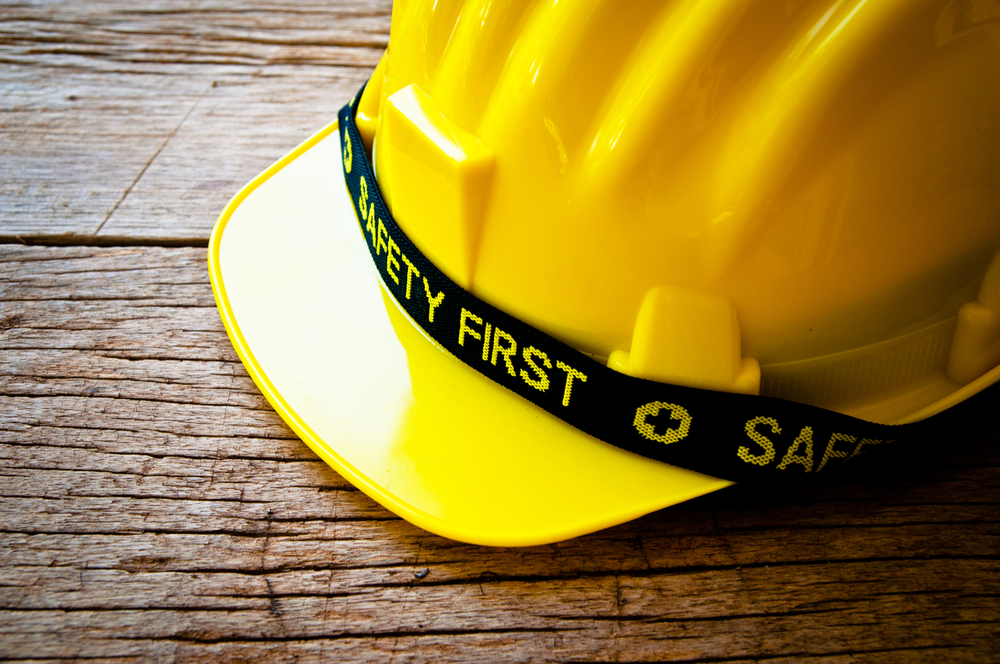News Post
April 2015 Newsletter
Fines after language barrier “results in fatal consequences”
A business has been fined for serious safety failings after a man died when he fell more than five metres through a fragile roof. A subsequent investigation highlighted a lack of communication, instruction, training and supervision leading to the fall.
It was heard in court how the Latvian national had arrived in Scotland only two weeks before his fatal fall. He was brought to the site by his nephew, and son who were employed by local butchery company, which was converting premises into residential property.
The two men were under the impression that they could bring additional workers to help undertake the works if required, who would be paid by the company for any work they did. Consequently they asked the man and his other son.
The evening prior to the incident the company’s managing director had visited the property to plan the next day’s work with the two men. Neither of the men had a thorough grasp of the English language. They formed the impression that they were to start removing the roof the following morning in his absence.
The Court was told the man was working with his nephew to remove the asbestos cement sheets from the roof. They had reached the roof using a telehandler, and, while the basket was on the ground being unloaded, the two were sitting near the apex of the roof. Suddenly and without warning, the roof collapsed beneath them.
One man managed to grab something and was left hanging from a wall but the other fell five and a half metres to the concrete floor below and died at the scene from head injuries.
The following investigation concluded that the circumstances leading up to the fatal incident showed poor communication, a lack of instruction and supervision, the use of equipment which was not suitable for the task, and the work being carried out in a manifestly unsafe manner.
Although the men should never have been on the roof itself at all, as the telehandler being used was not suitable for this work activity, the company would have been able to intervene to stop the roofing work had there been more effective and regular supervision.
The company, was fined £80,000, reduced to £60,000 after pleading guilty to breaching section 3 of the Health and Safety at Work etc. Act 1974.
Following the case, HSE principal inspector said: “This tragic incident could have been avoided had the work been planned properly and carried out with the correct equipment.
“This type of work should ideally be undertaken without the need to directly access the roof, for example by using a Mobile Elevated Working Platform, or, if that is not possible, with safety measures to minimise the risk of falling such as crawling boards, fall arrest harnesses or netting.
“In addition, an employer needs to arrange suitable training and instruction to ensure that persons working there clearly understand not only what they are expected to do but also how they are expected to do it in order to ensure a safe system of work will be followed.
“In this case the difficulties arising from the language barrier resulted in fatal consequences.”
The risks associated with work at height, and fragile roofs in particular, are very well known, and HSE has produced substantial amounts of free advice to assist duty holders to comply with the relevant legislative and regulatory requirements.
Falls from height continue to be the most common cause of fatality to workers. In the year 2013/2014 they accounted for 29 per cent of deaths reported to HSE, meaning that 19 workers lost their lives after a fall that year.
Worker’s death uncovers “appalling state” of ladders
An investigation into the death of a worker installing guttering at a home in Wales found he was using an unsafe ladder, a court has heard. Although the state of the ladder was not directly attributable to the fall, the company was fined under the PUWER Regulations as three ladders on site had a number of serious defects.
The man was working at a property when he fell from the ladder, sustaining a fatal head injury.
The employer, who runs a roofline products’ business, employed the man to carry out the work and was prosecuted by HSE Magistrates’ court.
HSE’s investigation found that the ladder provided by the employer was in an extremely poor state. Although HSE accepted the ladder was not responsible for the employees fall, it did have a number of serious safety defects which had the potential to cause serious incidents. Two other ladders provided for use on the job had similar critical defects.
HSE found the feet of the ladder were worn through, rungs were bent and one was missing. The defects were obvious through even a cursory inspection and made the ladder unfit for use.
The employer pleaded guilty to breaching regulation 5(1) of the Provision and Use of Work Equipment Regulations and was fined £4,000 and ordered to pay £4,000 in costs.
The court also granted a Forfeiture & Destruction Order for the ladders.
HSE inspector, speaking after the hearing, said: “Although the man’s death was not attributable to the ladder, it was in an appalling state and should never have been used.
“All work equipment must be maintained in a safe condition for use and checked regularly for any damage. For ladders, a quick and simple visual check should be done to look for any obvious defects.
“The most common and critical issues are worn or missing feet and damage to the rungs and stiles which are very easy to spot.”
Contractor to pay £200k following worker’s death on sewerage pipe scheme
A Construction company has been ordered to pay £200,000 in fines and costs after a workman was killed by a piece of flying timber which struck him on the head while laying sewerage pipes. HSE said that the workers had been allowed to “improvise” their own method of work which was inherently dangerous.
The man was working at the site when a piece of timber used as a cushion on the ends of the pipes being pushed in place by an excavator snapped.
Crown Court heard the company were the main contractors for the work and employed three workmen to lay iron sewerage pipes in a trench, following an HSE investigation into the incident.
The sections of pipe were designed to slot together and the workmen used an excavator bucket to push them in place. Two pieces of timber were used to cushion the ends of the pipes – one horizontally and one vertically. This was so the excavator could work around an existing horizontal strut on a trench box. The horizontal piece of timber snapped while being pushed by the excavator and a broken piece hit the man on the head. He sustained critical injuries and died six weeks later.
The company had not given the workmen any guidance or alternative ways to carry out their work around the strut which was causing an obstruction. They had been allowed to come up with their own method which was inherently dangerous.
They pleaded guilty to a breach of the Health and Safety at Work etc. Act 1974 and a breaching the Management of Health and Safety at Work Regulations 1999. The company was fined a total of £130,000 and ordered to pay £70,000 in costs.
A HSE inspector, speaking after the hearing, said: “This tragic loss of life could have been avoided if the company had taken proper measures before the work started and planned the task properly.
“Pipe laying companies must have safe systems of work and ensure their workers don’t have to improvise safety measures.
Kitchen fitter prosecuted for endangering homeowners’ lives
A man has been sentenced for putting the lives of homeowners at risk after deceiving a local kitchen fitting company by claiming he was Gas Safe registered.
The self-employed kitchen fitter, was contracted by the company to carry out work at three properties in the north where kitchens were being refurbished.
Work involved installing gas appliances, including gas hobs and in one case a central heating boiler.
The kitchen fitting company later contacted Gas Safe to check the work and a Gas Safe regional investigations officer switched off the boiler when it was found to have faults that could have endangered life or property if operated.
The Health and Safety Executive (HSE) launched an investigation and the self-employed kitchen fitter was prosecuted at Magistrates’ Court for multiple gas safety breaches.
Court was told that it is a legal requirement that any work carried out on gas appliances must only be done by a Gas Safe engineer. When asked by the kitchen company, the self-employed kitchen fitter had fraudulently claimed he was Gas Safe registered. However, he had never been Gas Safe registered and was not sufficiently competent to carry out the work.
He was fined a total of £6,000 and ordered to pay £500 in costs after pleading guilty to six breaches of the Gas Safety (Installation and Use) Regulations 1998 – three each of Regulation 3(3) and Regulation 3(7).
Speaking after the case the HSE inspector said:
“The self- employed kitchen fitter displayed a deliberate and reckless approach to the law by putting the owners of these three properties at risk with a view to profiting financially.
“Having deceived those involved into thinking he was Gas Safe registered he carried out work which in one instance could have resulted in someone being seriously injured or even killed.
“This case should act as a reminder that HSE will prosecute those who flout the law in such a way, putting the lives of members of the public in danger.”
Chief executive for Gas Safe Register, said:
“Illegal gas work is dangerous and can put lives and property at risk. It’s vital that you employ a Gas Safe registered engineer to carry out any gas work. Every registered gas engineer carries a Gas Safe ID card. Always ask to see the card and check their unique licence number with Gas Safe on the website www.gassaferegsiter.co.uk or call the free helpline on 0800 408 5500.”
Tourists injured in Tower Bridge lift fall
A lift company has been ordered to pay £100,000 in fines and costs after tourists were left with broken legs and ankles when a Tower Bridge lift fell several metres into a service pit because a vital mechanism failed. Following an investigation, the HSE reported clear failings concerning the maintenance of the lift.
Four people sustained bone fractures in the incident at the popular London landmark. A further six were treated for shock as walking wounded.
The lift car they were travelling in was ascending to the Tower Bridge Exhibition when it suddenly fell down the shaft from a distance of approximately three metres.
The company responsible for maintaining and servicing the lift, was sentenced following a complex technical investigation by the HSE, supported by the Health and Safety Laboratory (HSL). It identified failures linked to the maintenance of two refurbished lifts at Tower Bridge.
Crown Court heard that ten people, including one agency worker serving as a lift operator, were in the lift when it fell. The other passengers, all tourists, included an elderly couple and a young family.
The car ended up in a pit below the ground floor lift entrance after a counterweight mechanism failed.
The HSE investigation revealed that there had been a number of historic component failures in the counterweight mechanism on two separate lifts at the attraction prior to the catastrophic failure. However, these components had simply been replaced without a proper review and investigation as to why they were failing early.
HSE concluded that the uncontrolled fall could have been avoided had more in-depth analysis occurred, and that the fact this had not happened was indicative of wider failings.
The company was fined £50,000 and ordered to pay £50,000 in costs after pleading guilty to two charges covered by Section 3(1) of the Health and Safety at Work etc. Act 1974.
After sentencing the HSE Inspector said: “This was a truly disturbing incident that affected a number of people and that could have resulted in even greater injuries.
“It is vital that lifts are properly maintained, and that urgent action is taken if any possible issues or concerns are identified. There were warning signs here that were seemingly overlooked, and missed opportunities to properly rectify recurring faults.
“Temple Lifts could and should have done more to ensure the lift was properly maintained, and there were clear failings in this regard.”
Latest News
Health and Safety in Schools Checklist
Health and safety should be a top priority in any workplace, but especially in schools. Not only are you responsible for your staff’s safety, but you need to maintain the welfare of your pupils too. To do so, you must uphold your legal complian..
It can be difficult to decide your future path - a lot can ride on it, after all - but a career in health and safety could be the right choice for you. There are several types of careers in the health and safety industry that might be a good fit..
What is ISO 45001?
If you’re wondering what ISO 45001 is, then this is the guide for you. Replacing the old OHSAS 18001 standard, ISO 45001 is the new international standard for occupational health and safety management. In this guide, we'l..
Who Enforces Health and Safety?
The enforcement of health and safety is crucial to maintain healthy workplaces. The term health and safety itself covers the safety legislation and safety law that comes under the Health and Safety at Work Act 1974. In general, this means t..
Health and safety training is a requirement in the workplace, no matter which sector you work in. Our experts at SMS Europe have been providing an extensive range of specialist health and safety services for almost 20 years. To help make work en..
Health and safety in the workplace is all about controlling risks in a way that protects both your employees and your company. Strong leadership, including your employees, managers, suppliers, contractors, and consumers, is a characteristic of great ..
Health and safety in the workplace is immeasurably important. But, without the Health and Safety at Work Act of 1974, we might have never prized safety so highly. This piece of workplace legislation is highly significant and indeed has transform..
Fire Safety and Fire Risk Assessment at Leased Offices and Buildings Fire safety at leased single and multi- tenanted offices can be approached in a number of ways. Generally speaking, there are three types of premises, (single occupancy lea..
Safety Gloves
Please have a read at SMSE Managing Director Philip Marsden's article on Safety Gloves which is published in the February 2022 edition of Health and Safety International Magazine. https://www.hsimagazine.com/article/fits-like-a-glove/ We wo..
Current Health and Safety Industry Trends
New Guidance Released for Managing Home Workers As an employer, you have the same health and safety responsibilities for those who work from home as you do for all other employees who may work from the workplace. In most cases, the dange..
Who Is Responsible for the Health and Safety on a Building Site? Legally, the responsibility of health and safety within the business lies with the employer. It is up to them to make sure the environment meets the necessary health and safety requi..
No one wants to be injured whilst at work, and no one wants their staff to be injured, especially whilst on the job. That doesn’t mean that accidents don’t happen. In fact, each year an average of 22 manufacturing workers die in workplace..












